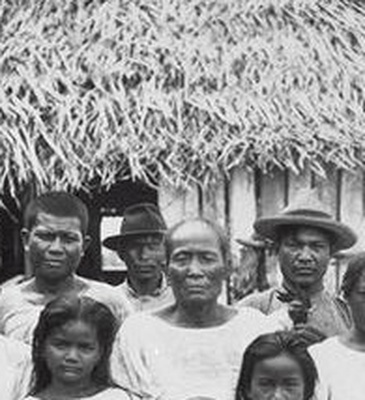Further information: Cuisine of the Mariana Islands and Culture of Guam § Cuisine
Chamorro red rice
Chamorro cuisine is influenced by various cultures. Examples of popular foods of foreign origin include various types of sweet or savory empanada, originally introduced by Spain, and pancit, a noodle dish from the Philippines.
Archeological evidence from islands in the Marianas reveals that rice was cultivated there since prehistory. Red rice made with achoti is a distinct staple food that strongly identifies Chamorro cuisine among the many dishes of fellow Pacific Island cultures. It is commonly served for special events, such as parties (gupot or "fiestas"), nobenas, and occasions such as a high-school or college graduations. The condiment fina'denne' accompanies most meals. Fruits such as lemmai, mangga, niyok, and bilimbines are consumed in various local recipes. In the Marianas, Korean, Chinese, Japanese, and American cuisine are also commonly available. Local cookies are known as guyuria.
Locally distinct foods include kelaguen, a dish in which meat is denatured in whole or in part by citric acid rather than heat; tinaktak, a meat dish made with coconut milk; and kå'du fanihi (flying fox/fruit bat soup). Fruit bats and local birds have become scarce in modern times primarily due to the World War II-era introduction of the brown tree snake, which decimated the populations of local birds and threatens the fanihi (fruit bat) population, as well. Illegal hunting of fruit bats also threatens existing populations.
Spam and other canned meats were introduced to the islands after World War II, leading to a dietary shift.
